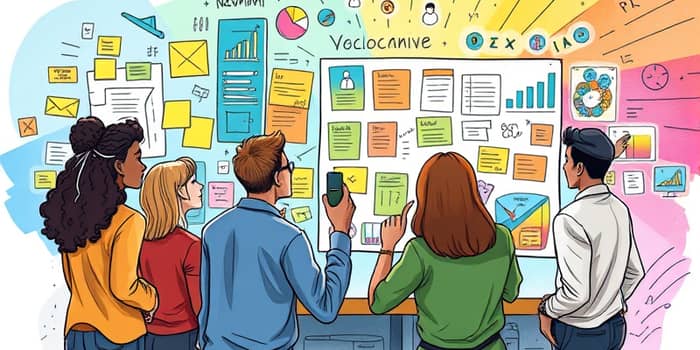
In today’s fast-paced world, organizations face ever-changing challenges and evolving customer expectations. Traditional, linear approaches struggle to keep pace, often resulting in delayed delivery and missed opportunities. Enter Agile methodologies: a transformative set of practices designed to help teams adapt quickly, deliver value continuously, and foster innovation across every level of the business.
Agile began in the early 2000s as a response to rigid, phase-gated frameworks that prioritized documentation over outcomes. The Agile Manifesto introduced four core values and twelve guiding principles centered on collaboration, adaptability, and frequent delivery. At its heart, Agile champions iterative development cycles with sprints and continuous stakeholder engagement across teams, enabling rapid feedback loops and course corrections.
Key principles include responding to change over following a plan, delivering working solutions rather than exhaustive documentation, and empowering self-managing teams that drive results. This mindset shift has since influenced not only software projects but also marketing, operations, and human resources.
Comparing Agile to traditional project management highlights how each approach handles roles, planning, and collaboration.
While traditional methods excel in stable, predictable contexts, Agile thrives in environments requiring adaptability and speed.
Organizations worldwide are leveraging Agile to unlock powerful business outcomes. According to industry research, nearly 98% of businesses support Agile methodologies, with US adoption hovering at 71%. Companies integrating Agile report:
This remarkable performance boost is driven by Agile’s focus on delivering incremental value. Teams prioritize the highest-impact features, solicit feedback, and pivot when necessary, fostering rapid reaction to market changes and minimizing wasted effort.
Agile adoption is propelled by several strategic drivers:
By embracing these drivers, organizations transform their delivery models, fostering a culture where experimentation is encouraged and learning is constant.
While Agile originated in software development, its principles now permeate non-technical domains. Marketing teams apply Kanban boards to manage campaign workflows, HR uses sprints to accelerate recruitment cycles, and operations deploy Scrum to streamline process improvements. This cross-functional, collaborative approach to innovation breaks down silos and keeps teams aligned on shared objectives.
Adoption statistics reveal that 53% of marketing teams use hybrid Agile methods, and 28% of business operations units are implementing variants of Scrum or Kanban. This broad uptake underscores Agile’s versatility and universal appeal.
Agile’s momentum is further amplified by advanced technologies that support seamless execution:
These enablers free teams to focus on creativity and collaboration, dedicating time to high-value activities that spark creativity and drive differentiation in competitive markets.
Despite its promise, Agile transformation is not without obstacles. Leading failure factors include inexperience in Agile practices and cultural resistance. Common challenges are:
Addressing these barriers requires strong executive sponsorship, ongoing coaching, and a clear roadmap that balances quick wins with long-term capability building.
Organizations track a range of metrics to gauge Agile maturity and impact. Frequent indicators include:
By monitoring these KPIs, teams can identify areas for refinement and celebrate tangible wins. This focus on transparent workflows increase departmental visibility and fosters accountability at every level.
Looking ahead, Agile will continue to evolve, integrating more deeply with automation platforms, advanced analytics, and AI-driven insights. Hybrid frameworks combining Scrum, Kanban, and Lean are poised to become the norm, offering tailored solutions for diverse business needs.
As Agile practices extend across marketing, finance, legal, and beyond, organizations will unlock unprecedented levels of agility and resilience. The journey requires dedication, learning, and adaptation, but the rewards—a culture of innovation and sustained growth—are well worth the effort.
Embrace Agile methodologies today to accelerate your business growth, foster collaboration, and deliver consistent value in a world where change is the only constant.
References













